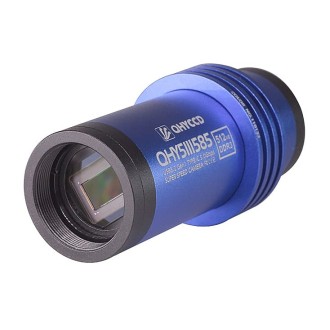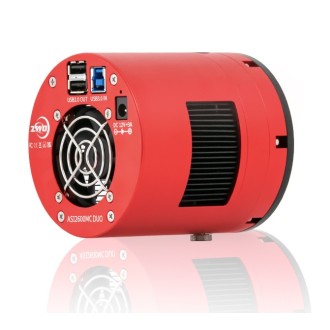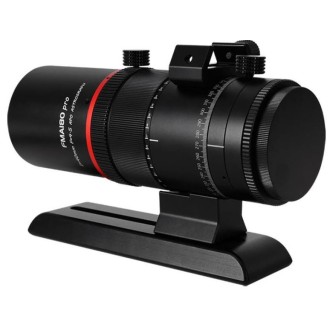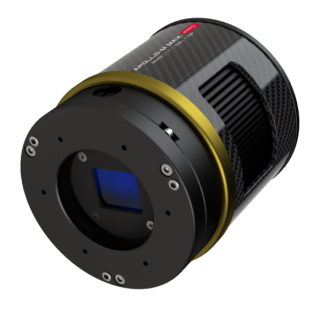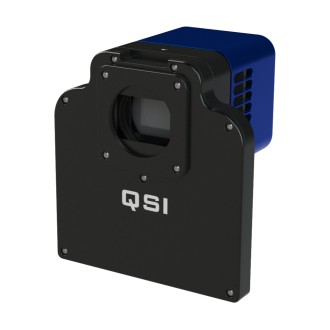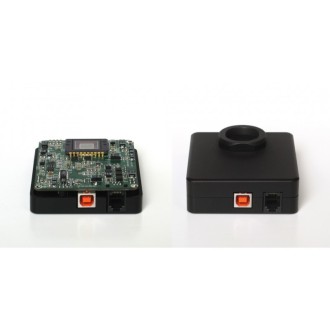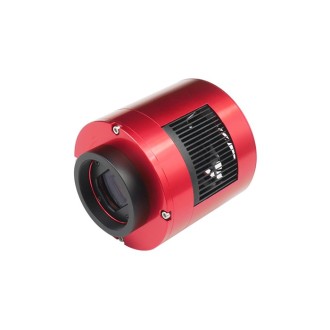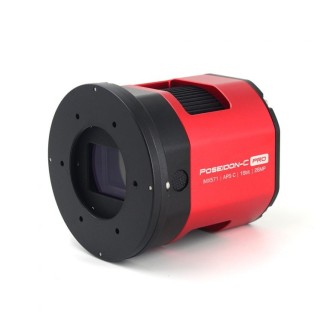QHY CMOS camera model QHY268C-PH color
| Carrier | Description | Estimated Delivery | ||
|---|---|---|---|---|
 |
Home delivery - International | Home delivery - International |
Tuesday, 27 May - Tuesday, 3 June |
|

Home delivery - International
Home delivery - International
Estimated delivery:
Tuesday, 27 May - Tuesday, 3 June
1.From January 2023, the top of the QHY268C will change to a shorter one like that of the 268M. In fact, you can already purchase the "SBFL (shorter back focal length)" version of the 268C. The previous 268C has a rear focal length of 17.5mm, and since it cannot be attached to the scope without AAC, its actual BFL is 17.5mm + 6mm = 23.5mm. Now, after the change, the 268C's BFL will be shortened to 14.5 mm, which provides more room for a filter wheel box, or an electric AAC, or a DSLR lens, etc.
2.From Jun 2023, The position of the QHY268PH Series heating plate will be raised by about 5mm, which will decrease the likelihood of fogging. This change will not affect back focal length calculations or any other function. Mono cameras will use the same adapter kit as before. Color cameras will have a different adapter kit (G1) as a standard accessory supplied with the camera. This change will apply first to the QHY268M-PH from this announcement and then to the color camera from September 1, 2023.
16-bit A/D provides high-resolution sampling of the full range of wells. Digitizing from 0-65535 levels produces a smooth image with a continuous gradation of grayscale levels. The QHY268M/C is a back-illuminated, cooled CMOS camera based on the Sony IMX571 sensor with 16-bit native A/D and 3.76um pixels.
Features
1 GB DDR3 image buffer memory
In order to provide uninterrupted and smooth data transfer of the entire 26 MP sensor at high speed, the QHY268 has a 1 GB DDR3 image buffer. The pixel count of the latest generation of CMOS sensors is very high, resulting in higher memory requirements for temporary and permanent storage. The QHY268 has adopted high-capacity memory of up to 1GB. Data throughput is doubled. This large image buffer meets the high-speed image acquisition and transmission needs of the new generation CMOS, making multi-frame shooting smoother and less choppy, further reducing pressure on the computer CPU.

Internal humidity sensor
The QHY268M has a unique internal humidity sensor (while the QHY268C does not). The blue curve shown below represents humidity.
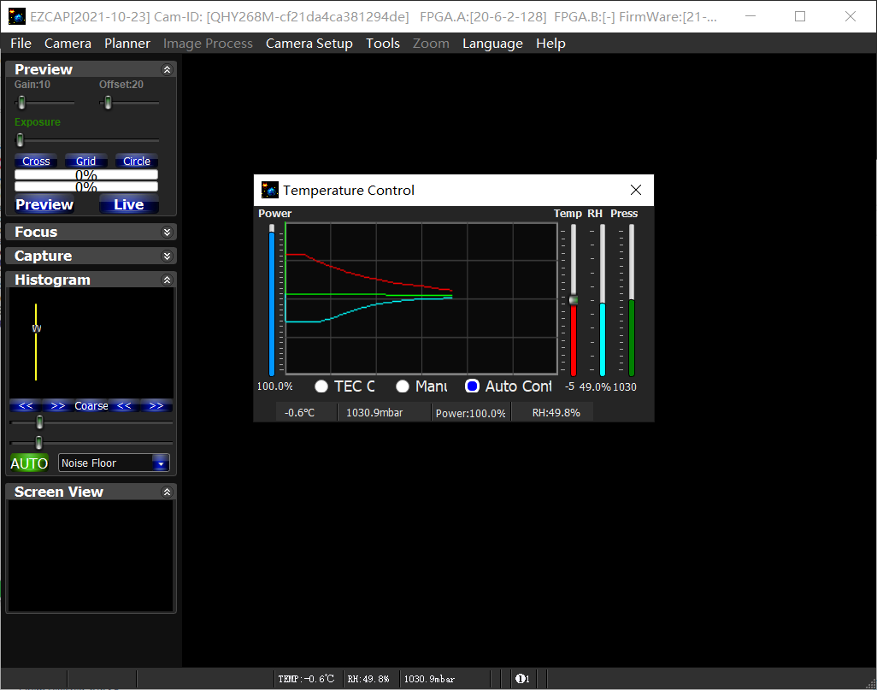
Native 16-bit A/DSony's new sensor has native 16-bit A/D on-chip. The output is true 16-bit with 65536 levels. Compared to 12-bit and 14-bit A/D, a 16-bit A/D offers higher sampling resolution and the system gain will be less than 1e-/ADU with no sampling error noise and very low read noise.

BSIOne of the advantages of the back-illuminated CMOS structure is the improved full-well capability. In the back-illuminated sensor, light enters the photosensitive surface from the reverse side. In this case, the embedded wiring structure of the sensor is located below the photosensitive layer. As a result, more photons strike the photosensitive layer and more electrons are generated and captured in the pixel well. This ratio of photon output to electron output is called quantum efficiency. The higher the quantum efficiency, the more efficient the sensor is at converting photons into electrons, and therefore the more sensitive the sensor is at capturing an image of something faint.
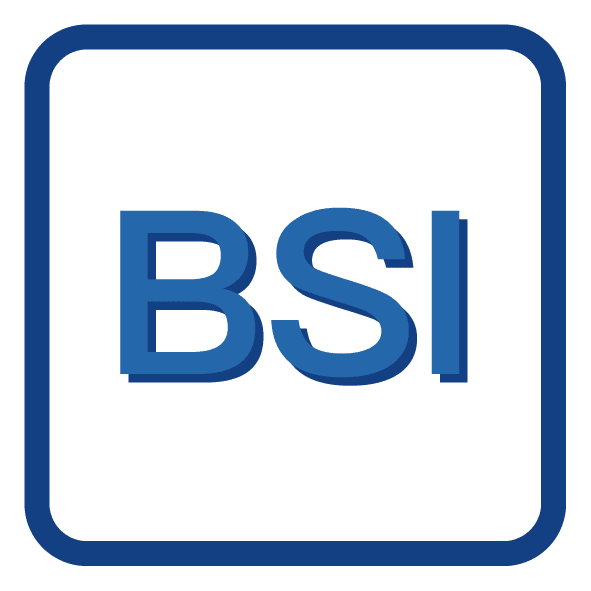
TRUE RAW dataIn the DSLR implementation there is a RAW image output, but it is usually not fully RAW. Some evidence of noise reduction and hot pixel removal is visible on close inspection. This can have a negative effect on the image for astronomy, such as the "star-eating" effect. However, QHY cameras offer a TRUE RAW IMAGE OUTPUT and produce an image composed only of the original signal, thus maintaining maximum flexibility for post-acquisition astronomical image processing programs and other scientific imaging applications.

Zero Amplify GlowThis is also a zero-amplifier brightness camera.

Cooling and anti-freeze controlIn addition to dual-stage TE cooling, QHYCCD implements proprietary technology in the hardware to control dark current noise. The optical window has a built-in dew heater and the chamber is protected against internal moisture condensation. An electric heater plate for the chamber window can prevent the formation of dew.

Sealing technologyBased on nearly 20 years of experience in refrigerated chamber design, the QHY refrigerated chamber has implemented the sealing control solutions. The sensor itself is kept dry with our silicone gel tube socket design for humidity control inside the sensor chamber. By the way, there is no oil leakage.

Advanced functions
Multiple reading modes
Multiple readout modes are special for 16-bit QHY cameras (QHY600/268/461/411). Different read modes have different controller times, etc., and result in different performance. See details in "Multiple Readout Modes and Curves".
Random change thermal noise suppression function
It is possible that some types of thermal noise may change over time in some back-illuminated CMOS cameras. This thermal noise has the fixed position characteristic of typical thermal noise, but the value is not related to exposure time. Instead, each frame appears to have its own characteristics. The QHY600/268/461/411 use innovative suppression technology that can significantly reduce the apparent level of such noise.
UVLO Protection
UVLO(Under Voltage Locking) is to protect the electronic device from damage caused by abnormally low voltages.
Our daily experience tells us that the actual operating voltage of an electrical device must not significantly exceed the rated voltage, otherwise it will be damaged. In the case of precision equipment such as cameras, long-term work with too low input voltage can also be detrimental to the lifetime of the camera, and may even cause some devices, such as the power supply manager, to burn out due to long-term overload. In the all-in-one driver and SDK after stable version 2021.10.23, the camera will give a warning when the camera input voltage is below 11V.
Optimizing USB Traffic to Minimize Horizontal Banding
It is a common behavior for a CMOS sensor to contain some horizontal banding. Normally, random horizontal banding can be eliminated by stacking multiple frames, so it does not affect the final image. However, periodic horizontal banding is not removed by stacking, so it may appear in the final image. By setting the USB traffic to Single Frame or Live Frame mode, the frequency of the CMOS sensor driver can be adjusted and the horizontal banding appearing in the image can be optimized. This optimization is very effective in eliminating periodic banding in some conditions.
A typical Horizontal Periodic Noise under certain values of USB_TRAFFIC.
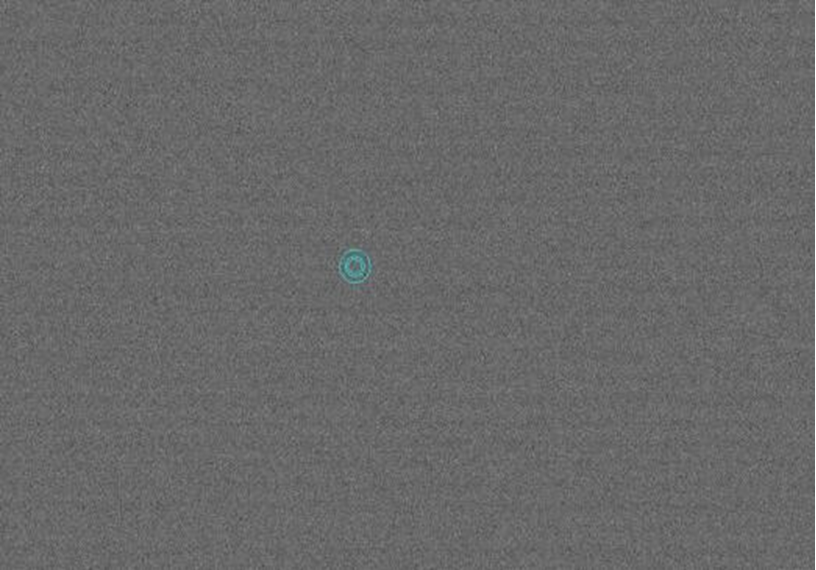
After adjusting the USB traffic to avoid periodic horizontal noise.
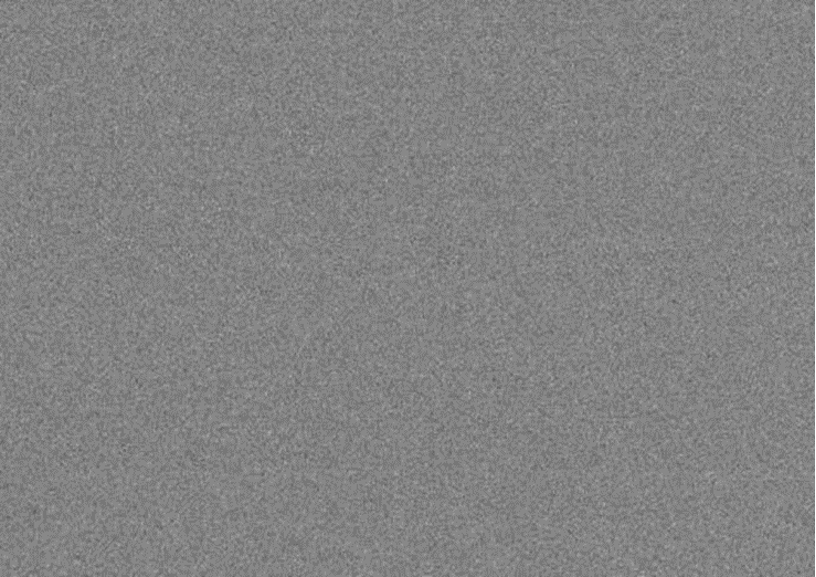
Restart the camera by turning it off and on
The camera is designed to use the +12V to reboot the camera without disconnecting and reconnecting the USB interface. This means that you can reboot the camera by simply turning the +12V off and then on again. This feature is very useful for controlling the camera remotely in an observatory. You can use a remote controlled power supply to reboot the camera. There is no need to consider how to reconnect the USB in case of remote control.
Updated: QHY268 12bit High-speed mode
Multiple reading modes and curves
Reading mode #0 (Photographic mode)
Reading mode No. 1 (high gain mode)
Reading mode no. 2 (extended full well mode)
Reading mode No. 3 (extended full well mode-2CMS)
Reading mode No. 4 (photographic mode-2CMS)
Reading Mode #5 (High Gain Mode-2CMS)
Please pay attention to important gain values, such as gain 26 (unity gain), gain 56 (high gain mode)
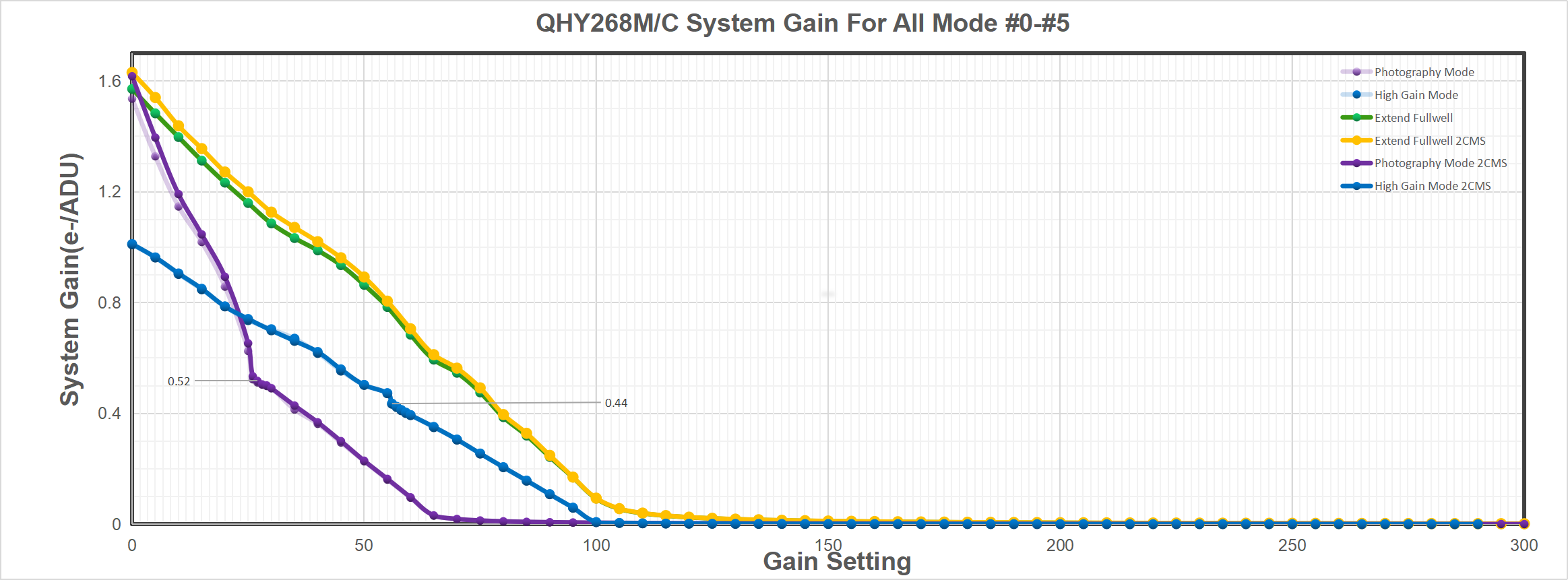
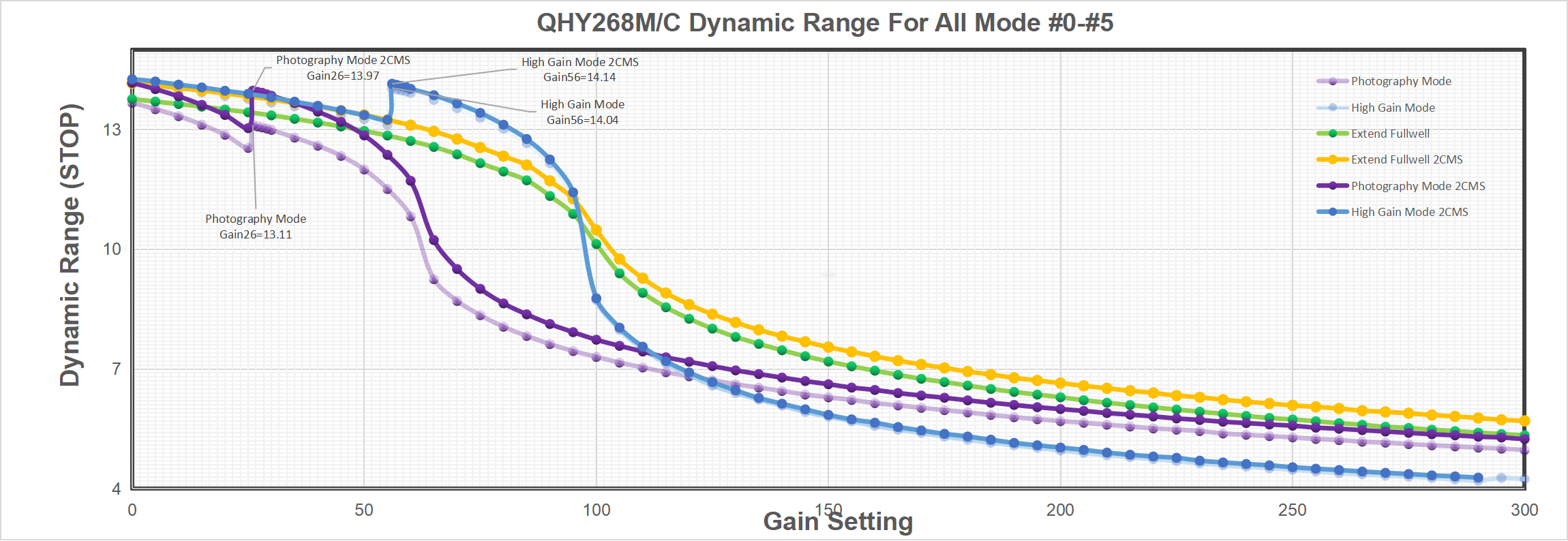
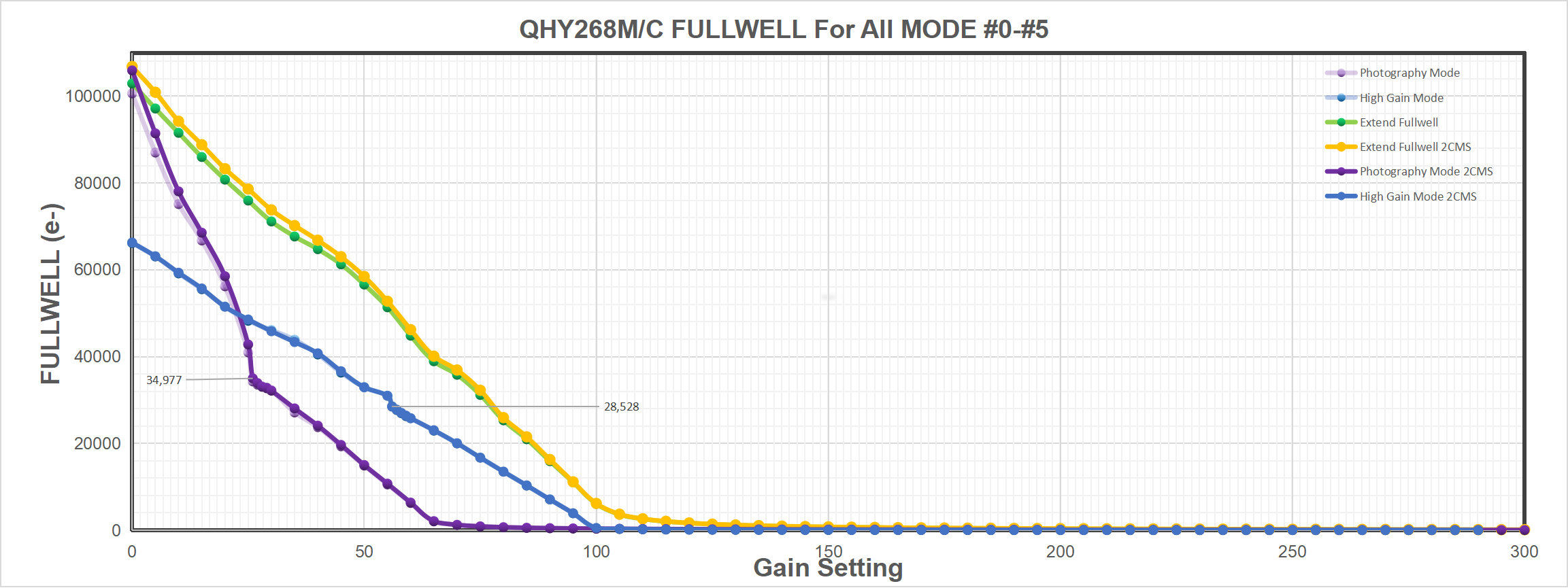
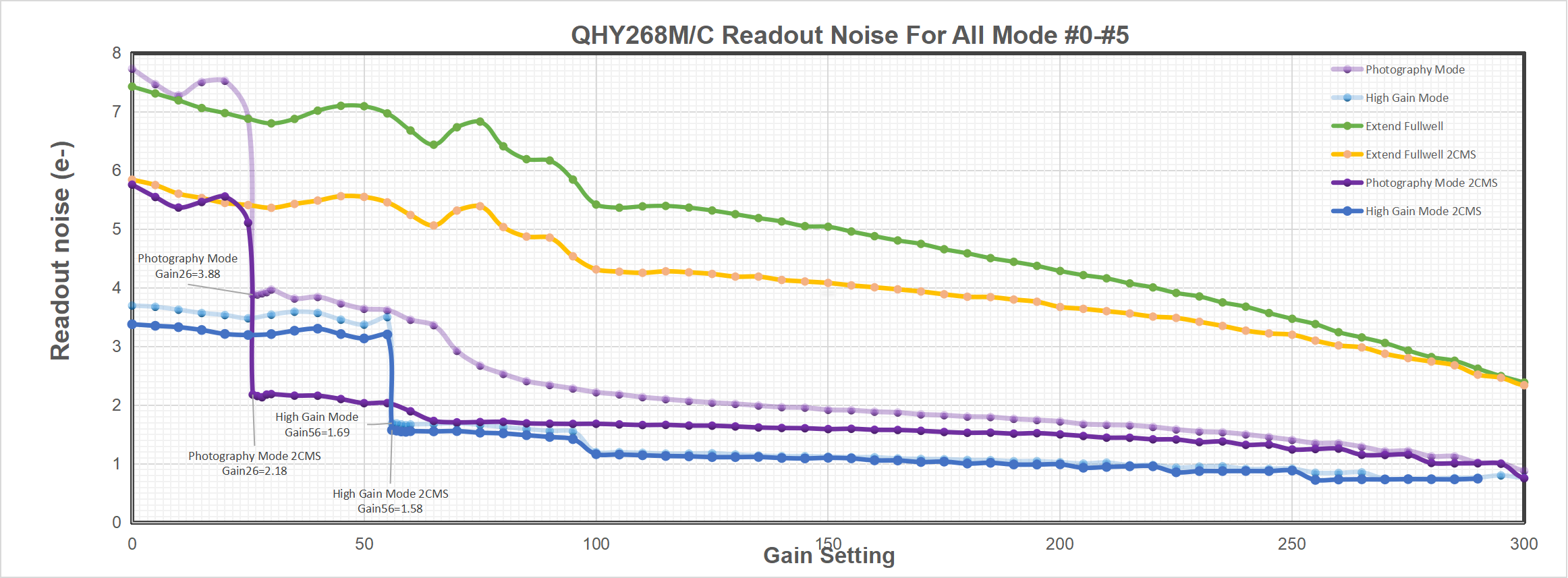
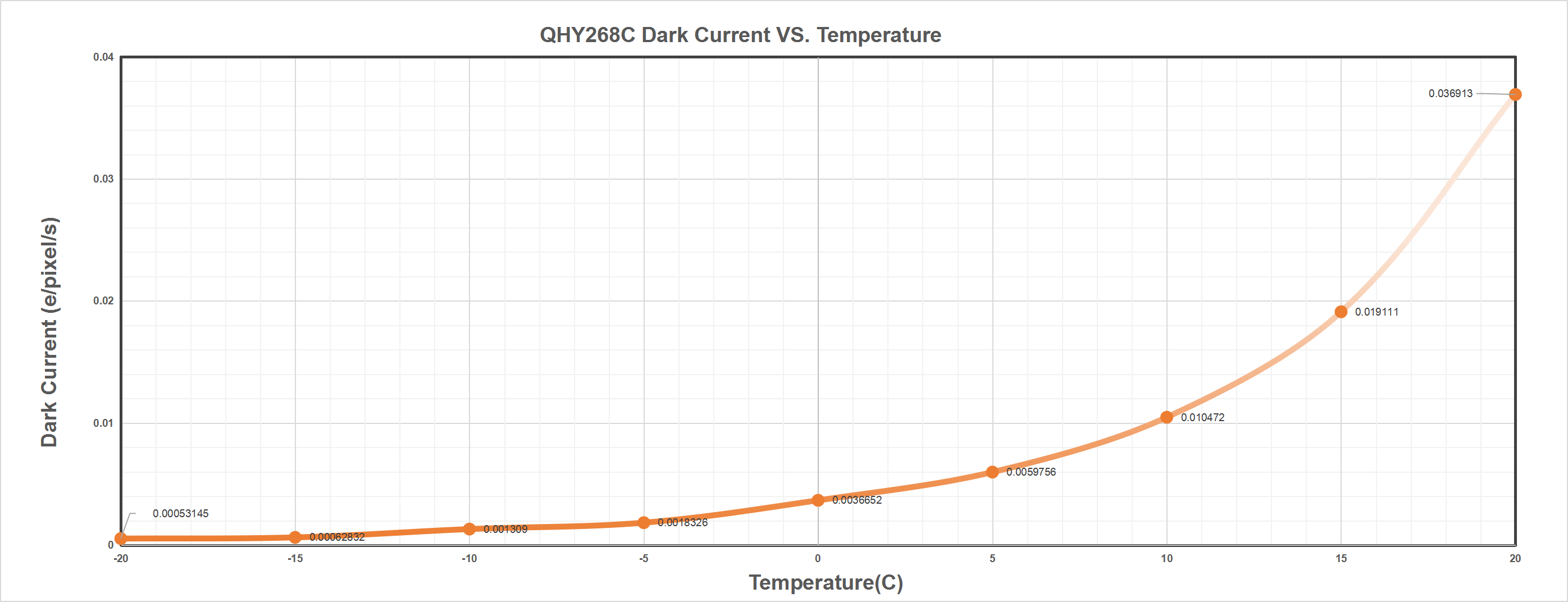
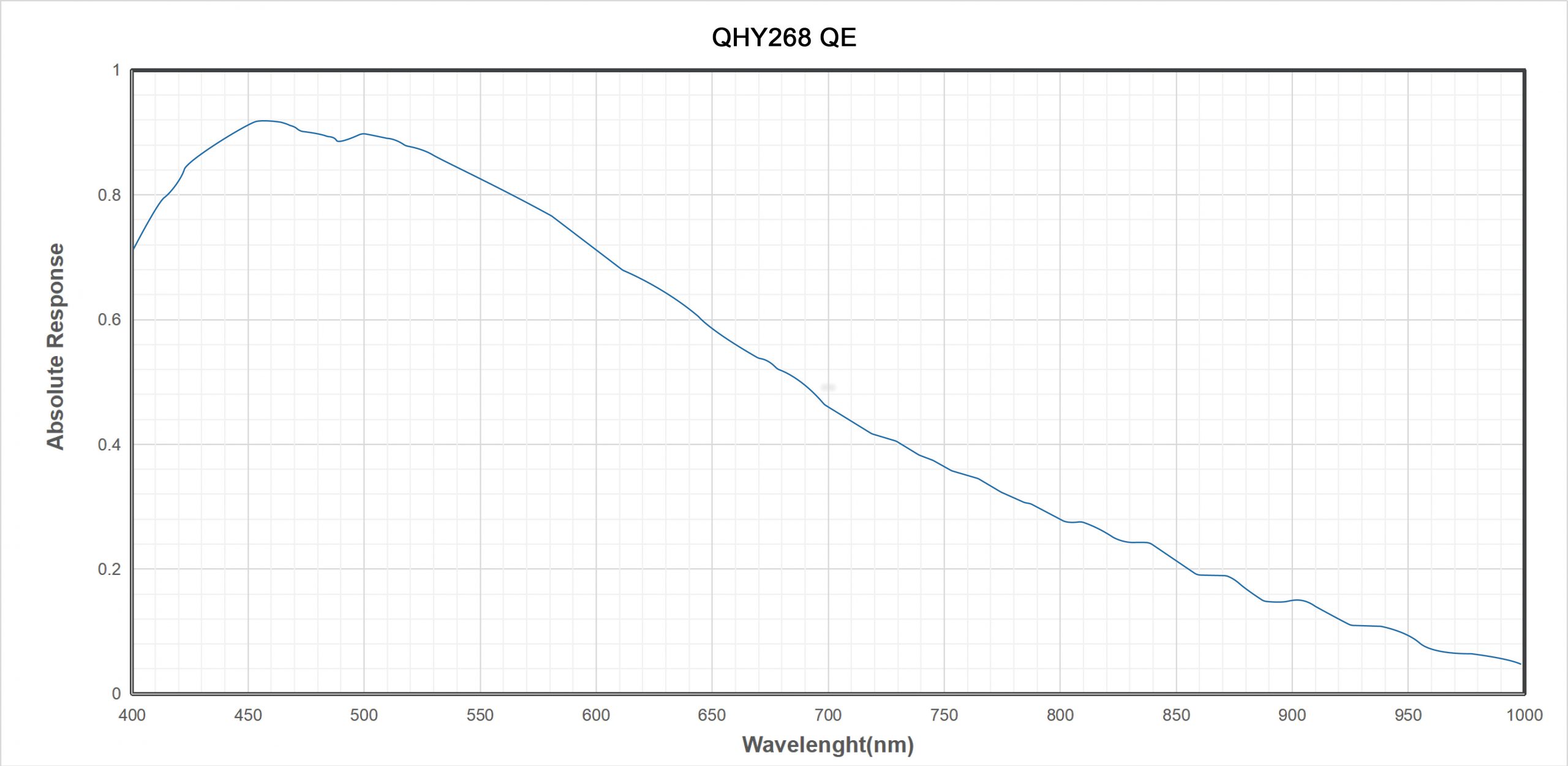
The multiple readout modes are special for the 16-bit QHY cameras (QHY600/268/461/411). Different read modes result in different performance. These read modes are currently supported in ASCOM, SharpCap and N.I.N.A.
DSO photographic mode (Mode #0)
This mode is suitable for most DSO imaging situations. Since there is a drop in noise between gain 25 and gain 26 (unity gain), we recommend it as the default gain setting; however, gain0 is also good enough for a 16-bit sensor.
High Gain Mode (Mode #1)
This mode is something like double the native iso of some of the new digital cameras, whose dynamic range can be greatly reduced by varying the iso value, such as iso800, iso3200, etc. The high gain mode provides this enhancement for 16-bit QHYCCD cameras. We recommend that you choose this mode when you need to capture at high gain, for example, a dark object. Note that the HGC/LGC switch point of the QHY600/268/461 is 56. This means that you must set the gain to 56 to get the most out of it.
Extended full well mode (Mode No. 2)
With a pixel size of 3.76um, these sensors already have an impressive full well capacity of 51ke. However, QHYCCD has implemented a unique approach to achieve a full well capacity in excess of 51ke through innovative user-controllable readout mode settings. In extended full-well mode, the QHY600 can achieve an extremely large full-well load value of nearly 80ke- and the QHY268 can achieve nearly 75ke-. Higher full-well capability provides greater dynamic range and is less likely to saturate large variations in brightness magnitude.
2CMS modes
Extended Fullwell mode-2CMS (Mode#3)
DSO Photo-2CMS mode (Mode#4)
High gain mode-2CMS (Mode#5)
Based on the above three basic modes, the 2CMS mode can greatly reduce read noise by secondary sampling while maintaining the same full-well value and system gain. We prefer the 2CMS modes to the basic modes in astrophotography. Incidentally, the recommended gain values are the same as those of the basic modes.
Technical characteristics
| Model | QHY268M/C PH |
| CMOS sensor | SONY IMX571 |
| Mono/Color | Both available |
| FSI/BSI | BSI |
| Pixel size | 3.76μm*3.76μm |
| Effective pixel area | 6252*4176 |
| Total pixel area | 6280*4210 (including optical black area and overscan area) |
| Effective pixels | 26 Megapixels |
| Sensor size | APS-C |
| A/D | 16-bit (0-65535 grayscale) A/D native |
| Full Well Capacity (1×1, 2×2, 3×3) | Standard mode 51ke- Full Well Extended Mode >75ke- |
| Frame rate | Full resolution: 6.8FPS@8bit, 6FPS@16bitROI: 2048lines, 13.6FPS@8bit, 11.5FPS@16bit 1080lines, 25.4FPS@8bit, 19.5FPS@16bit 768lines, 35FPS@8bit, 25FPS@16bit 480lines, 50FPS@8bit, 34FPS@16bit |
| Reading Noise | 1.1e- to 3.5e- (5.3e- to 7.4e- in Full Well Extended Mode) |
| Oascuridad Current | 0.0005 e-/pixel/s@-20℃, 0.001 e-/pixel/s@-10℃ |
| Exposure time range | 30 μs-3600 s |
| Recommended gain | 30 (PH Mode, or Full Well Extended Mode) 56 (High Gain Mode) *See more in "Readout Modes". |
| Control Amp | Zero Glow amplification |
| Shutter | Electronic |
| Computer interface | USB3.0 |
| Integrated image buffer | 1GB DDR3 Buffer memory |
| Cooling system | TEC dual-stage cooler: - Long exposures (> 1 s) typically -35℃ below ambient - Short presentations ( |
| Type of optical window | AR+AR High-quality multi-layer anti-reflective coating |
| Telescope interface | M54 or M48 bracket (Combined with adapters ) |
| Rear focal length *See:https://www.qhyccd.com/adapters/ |
14.5mm(±0.2) |
| Anti-humidity heater | Available |
| Humidity sensor | Available only on QHY268M |
| Remote firmware/FPGA upgrade | Through the camera's USB port |
| Weight | 810g |
Mechanical dimensions
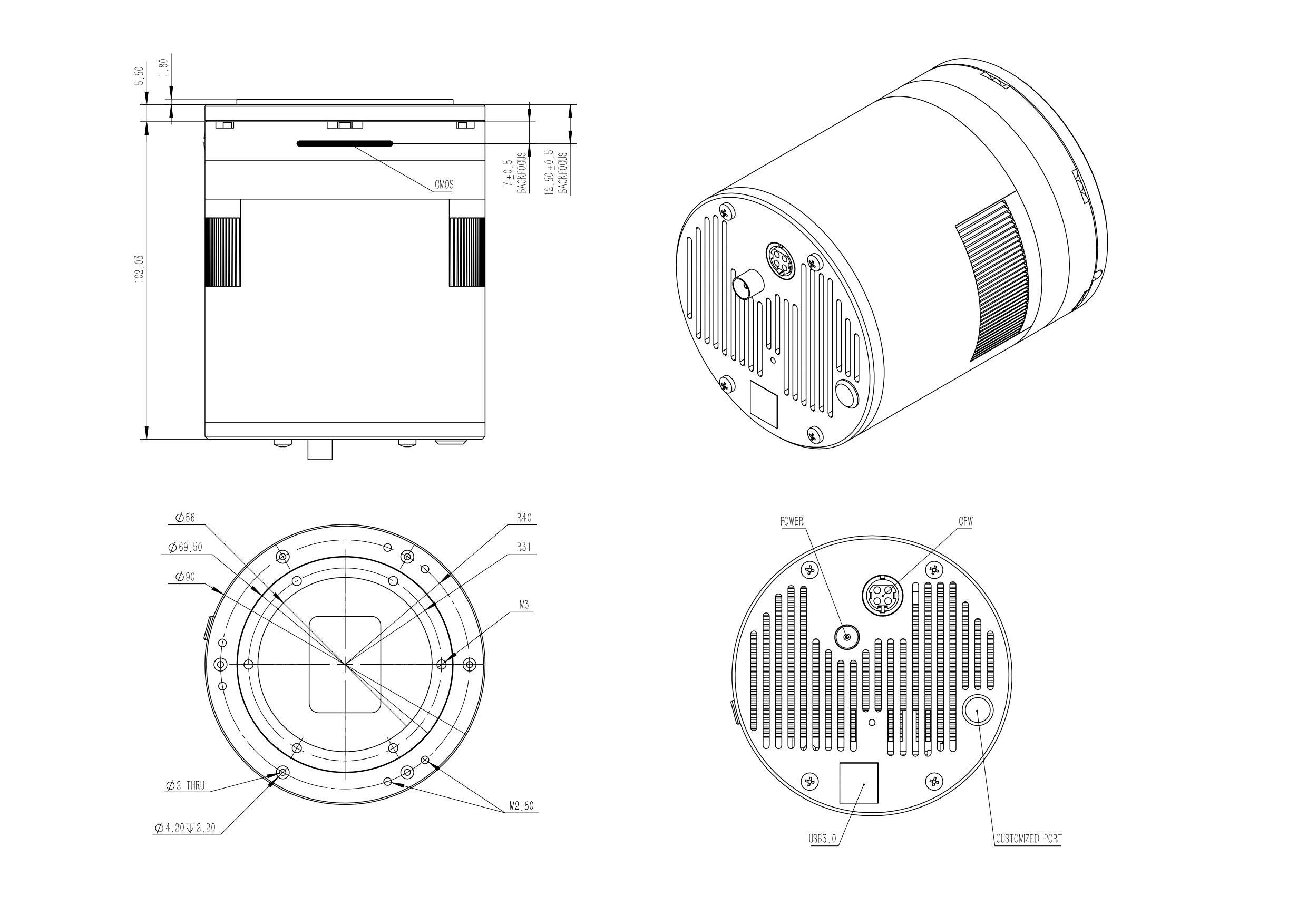
Content de the box
| Article | Quantity |
| Camera | 1 |
| Locking power cable | 1 |
| USB3.0 cable | 1 |
| 12 V power adapter | 1 |
| AV power cable | 1 |
| Desiccant tube | 1 |
| M54 to 2" adapter | 1 |
| Adapter kit instructions | 1 |
| Download instructions | 1 |
| Adapter Kit B1 | for QHY268M |
| Adapter 4mm M54 *2 | for QHY268C |



